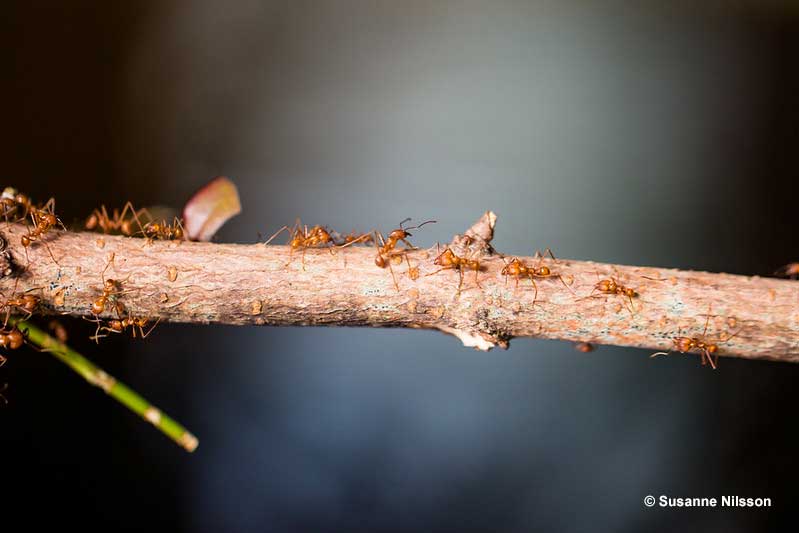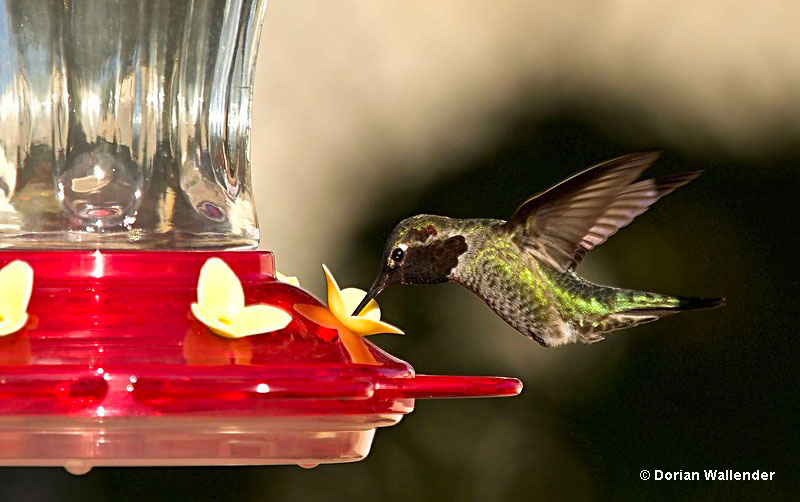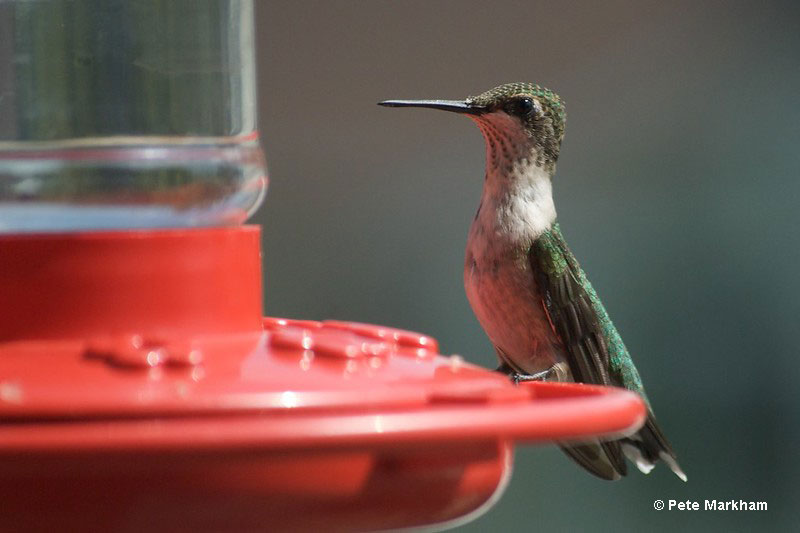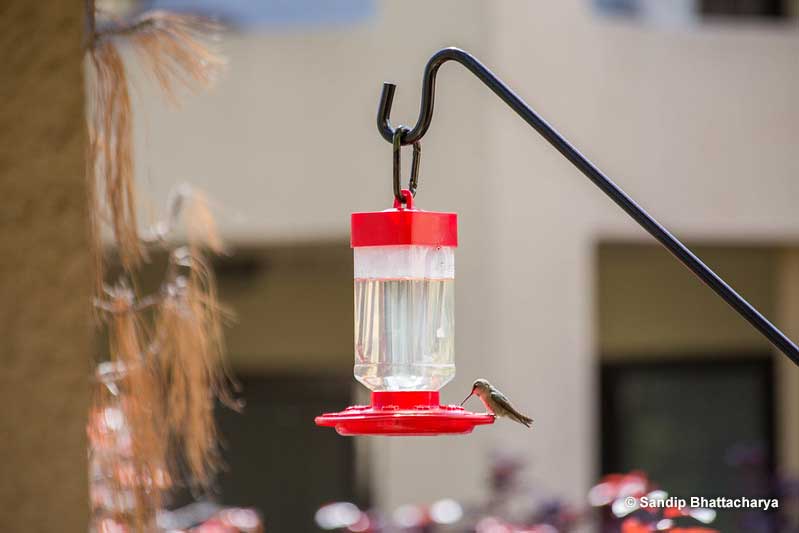
Feeding hummingbirds is one of life’s joys. It’s easy too! Just install hummingbird feeders, and the birds will find them.
However, if you aren’t careful, less welcome animals can find them too. Ants are one of those animals and believe me, you don’t want them at your hummingbird feeders!
What problems can ants cause at hummingbird feeders? Can ants harm hummingbirds? How can you keep ants away from hummingbird feeders?
See this article for answers and more about keeping ants away from hummingbird feeders!
On this page
The Problem of Ants
Ants are such tiny insects, they seem insignificant. A few ants or even twenty ants would still be hard to notice but what about a few thousand? How about 200 thousand?
When it comes to ants, there’s strength in numbers, and if they find your hummingbird feeders, you’ve got a problem!
Different species of ants have different diets, but most have a natural sweet tooth. Just like our cherished hummingbirds, ants love sugar water. The tiny insects are naturally attracted to food scraps but especially like anything with sugar.
They love sugar so much for the same reasons hummingbirds feed on it, and why so many people love desserts and candy. Sugar provides a quick burst of energy, something that can be vital for small animals like hummingbirds and ants.
Ants are always on the search for sugary food and if they detect your feeders, the nectar will be their number one feeding priority. It won’t take long for a stream of ants to head to the feeder and find their way inside.

Once that happens, many of the ants will end up drowning in the nectar and contaminating it. Hummingbirds quickly discover that they can’t drink the nectar and fly off to find better, safer feeding options.
Keep Ants off Hummingbird Feeders with Ant Moats
An ant moat is one of the easiest and most common ways to keep ants from ruining hummingbird feeders.
Ant moats basically function like the moats that were built around castles. They are small structures filled with water that keep ants from reaching the feeder.
A lot of feeders come with an ant moat built in below the hummingbird feeding holes. Make sure to fill the moat with water and that should keep them from reaching the nectar. Ant moats can also be attached to a metal rod above the feeder. These look like small cups filled with water ants have to cross to reach the feeder.
Install an Ant Guard with Permethrin
Sometimes, ant moats don’t work. If water in the ant moat evaporates in hot weather, ants won’t hesitate to cross it. Sometimes, ants can be so determined, they even form “ant bridges” to cross a shallow, water-filled moat!
One solution is installing an ant guard that uses Permethrin. Like an ant moat above the feeder, the ant guard is also placed on the metal rod or rope that the feeder hangs from. It’s a small plastic object that has Permethrin, a chemical that keeps ants and other insects away. It’s also safe for people and hummingbirds, and will probably deter ants instead of outright killing them.
Move the Hummingbird Feeder
Another easy, ant-deterrent fix is moving the feeder. Once ants find that sugar water, they’ll be fixated on it for a while. However, they don’t detect sugar water immediately. It will still take some time for worker ants to detect it.

If you see ants climbing up to the hummingbird feeder, take it down and move it to another corner of the year (hopefully one that lacks ants!). As long as the feeder or feeder pole isn’t right next to an ant nest, it will take a while for the ants to refind it. If they do happen to refind the feeder, move it again to another spot.
Use Fishing Line to Hang Hummingbird Feeders
We usually hang hummingbird feeders from a metal pole or maybe from a branch. Either way, we tend to use string or a metal chain. You do need to use something strong enough to hang a feeder but, unfortunately, both of those options act as perfect ant highways.
Related: Best DIY nectar recipes
To slow the crawling insects down, hang the hummingbird feeder with strong fishing line. Ants have so much trouble walking on monofilament that they may give up trying to reach the feeder entirely. Just make sure to use fishing line that can hold well over two pounds. That would be at least “four pound test” or more.
Check Hummingbird Feeders for Cracks and Leaks
Your hummingbird feeders might also be attracting ants because they leak. Sugar water falling to the ground is like ringing a dinner bell for ants!
They don’t need to climb any pesky poles or ropes. Their favorite food is right there on the ground to be enjoyed by the entire nest.
However, as the dripping nectar brings in the ants, they will also branch out and look for more food. They’ll detect where that sugar water is coming from and climb up to the feeder.
Check your feeders regularly for cracks and leaks. If you find any, replace them.
Clean the Outside of the Hummingbird Feeder Too
Unlike hummingbirds, ants don’t find feeders by sight. Instead, they detect them by scent. The more the sugar water stays inside the feeder, the longer it takes for ants to find them.
However, hummingbirds can throw sugar water around more than you think, especially when fighting with each other. Sugar will eventually accumulate on the outside part of most hummingbird feeders.
To keep it from coating the feeder and calling in the ants, make sure to wash every part of the feeder. In addition to thoroughly cleaning the inside of a hummingbird feeder, make sure to wash the feeder exterior too!
Rub the Feeder Pole with Natural Ant Repellent
You could also drive off ants by putting up an effective “not welcome” sign. For ants, that means using certain scents or substances that are unpleasant for the insects.
Two good options are mint and bay leaves. Both of these plants have natural oils that ants simply cannot stand. Rub those leaves all over the bottom part of the metal hanging pole and ants won’t dare to climb up. This is a good fix but you have to reapply it now and then, especially after rain.
Other options are spreading dried mint and bay leaves around the base of the pole, or planting mint below the feeder.
Hang Hummingbird Feeders Over Water
If other solutions aren’t working, try hanging the feeder over water. This can be tricky because you’ll have to install the feeder hanging pole directly in a goldfish pond or fountain. However, if you can make that happen, you’ll never have to worry about ants.
Your water feature will act as a giant moat much too big for an ant bridge. None of the insects will even reach the pole and if they could, it might be too wet for them to climb it anyways. Just make sure that the feeder is high enough above the water to stay dry.
Frequently Asked Questions
What naturally drives ants away?
Cinnamon, citrus peels, cloves, coffee grounds, and cayenne pepper are some of the substances that naturally drive ants away.
Will Vaseline keep ants away?
Yes, Vaseline will keep ants away but you should never put it on or near hummingbird feeders. Petroleum jelly is harmful to hummingbirds.
Does copper repel ants?
Copper does repel ants to a certain degree. Ants don’t like to walk over copper.
What do ants hate the most?
Ants hate white vinegar and coffee grounds the most.
Do you have any experience with warding off ants? Share your experiences in the comments!


